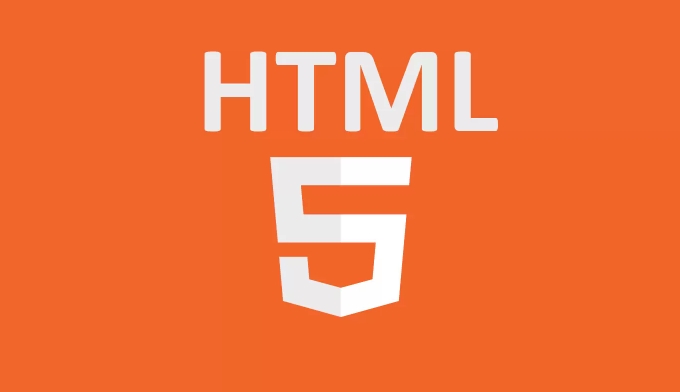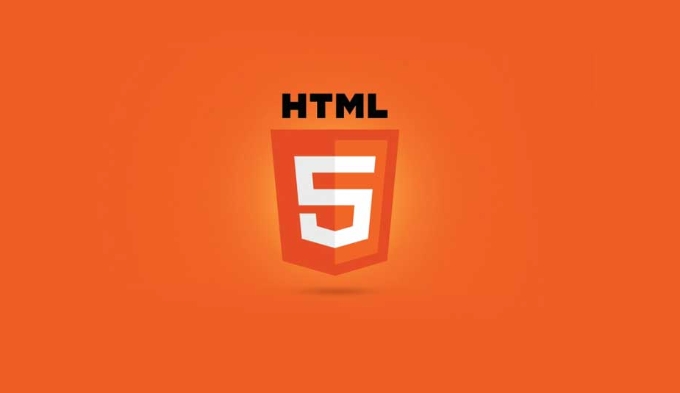Structuring page layout with HTML `` and `` elements.
Jul 02, 2025 pm 03:52 PMUse

Laying pages with HTML和elements is actually a very practical approach. Although these two labels are simple, their rational use can make the structure clearer and the semantics clearer, especially in responsive design and SEO optimization.
 ` elements." />
` elements." /> Why choose <div> and <code><span></span> ?
<div> is a block-level element, which is often used to divide the structural areas of the page, such as the header, content area, sidebar, etc. It has no default style itself, it depends entirely on you to control it, and it has high flexibility. <img src="/static/imghw/default1.png" data-src="https://img.php.cn/upload/article/000/000/000/175144274766174.jpeg" class="lazy" alt="Structuring page layout with HTML `<div>` and `<span>` elements."> ` elements." /><p> <code><span></span> is an inline element, usually used to wrap a small piece of text or content, suitable for local style adjustments or script operations. For example, highlight a few words, dynamically modify some content, etc.
They do not have their own meanings like semantic tags (such as <header></header> , <article></article> ), but they are still very common in actual development, especially when highly custom structures are required.
 ` elements." />
` elements." /> How to use <div> to build a basic page structure?<p> Most web pages can be divided into several main parts: top navigation, main content area, sidebar, bottom information. You can organize these blocks with multiple <code><div> :<pre class='brush:php;toolbar:false;'> <div id="header">Here is the website title or navigation</div>
<div id="main">
<div id="content">The main content is here</div>
<div id="sidebar">Sidebar content</div>
</div>
<div id="footer">footer information</div></pre><p> This writing structure is clear and can easily implement various arrangements with CSS layout (such as Flexbox or Grid). Each <code><div> can be styled or behavior individually via id or class .
<span> What scenarios are suitable for?
<span> What scenarios are suitable for? Because <span> is an inline element, it is more suitable for inserting some style changes or interactive functions in the middle of text. for example:
- Add color or background to the keywords in a paragraph
- Embed icons in buttons or load status prompts
- Dynamically update a number or status information
For example:
<p>Your account balance is: <span class="highlight">$100.00</span></p>
This allows the "$100.00" part to be highlighted without affecting the overall layout.
Several common misunderstandings and suggestions
Sometimes newbies abuse <div> and <code><span></span> , resulting in structural confusion. Here are a few tips:
- Don't over-neck, keeping the structure flat helps maintain
- Try to use more semantic tags (such as
<nav></nav>,<section></section>) to enhance accessibility and SEO - When you need layout, you prioritize modern layout methods (Flexbox, Grid) instead of relying solely on stacking
- If you just want to change part of the text style, use
<span>instead of creating a new<div><p> Basically that's it. Although they are simple, they can make your HTML structure clear and efficient if used properly.</p></div> - If you just want to change part of the text style, use
The above is the detailed content of Structuring page layout with HTML `` and `` elements.. For more information, please follow other related articles on the PHP Chinese website!

Hot AI Tools

Undress AI Tool
Undress images for free

Undresser.AI Undress
AI-powered app for creating realistic nude photos

AI Clothes Remover
Online AI tool for removing clothes from photos.

Clothoff.io
AI clothes remover

Video Face Swap
Swap faces in any video effortlessly with our completely free AI face swap tool!

Hot Article

Hot Tools

Notepad++7.3.1
Easy-to-use and free code editor

SublimeText3 Chinese version
Chinese version, very easy to use

Zend Studio 13.0.1
Powerful PHP integrated development environment

Dreamweaver CS6
Visual web development tools

SublimeText3 Mac version
God-level code editing software (SublimeText3)

Hot Topics
 How do I minimize the size of HTML files?
Jun 24, 2025 am 12:53 AM
How do I minimize the size of HTML files?
Jun 24, 2025 am 12:53 AM
To reduce the size of HTML files, you need to clean up redundant code, compress content, and optimize structure. 1. Delete unused tags, comments and extra blanks to reduce volume; 2. Move inline CSS and JavaScript to external files and merge multiple scripts or style blocks; 3. Simplify label syntax without affecting parsing, such as omitting optional closed tags or using short attributes; 4. After cleaning, enable server-side compression technologies such as Gzip or Brotli to further reduce the transmission volume. These steps can significantly improve page loading performance without sacrificing functionality.
 How do I use the element to represent the footer of a document or section?
Jun 25, 2025 am 12:57 AM
How do I use the element to represent the footer of a document or section?
Jun 25, 2025 am 12:57 AM
It is a semantic tag used in HTML5 to define the bottom of the page or content block, usually including copyright information, contact information or navigation links; it can be placed at the bottom of the page or nested in, etc. tags as the end of the block; when using it, you should pay attention to avoid repeated abuse and irrelevant content.
 How has HTML evolved over time, and what are the key milestones in its history?
Jun 24, 2025 am 12:54 AM
How has HTML evolved over time, and what are the key milestones in its history?
Jun 24, 2025 am 12:54 AM
HTMLhasevolvedsignificantlysinceitscreationtomeetthegrowingdemandsofwebdevelopersandusers.Initiallyasimplemarkuplanguageforsharingdocuments,ithasundergonemajorupdates,includingHTML2.0,whichintroducedforms;HTML3.x,whichaddedvisualenhancementsandlayout
 How do I use the tabindex attribute to control the tab order of elements?
Jun 24, 2025 am 12:56 AM
How do I use the tabindex attribute to control the tab order of elements?
Jun 24, 2025 am 12:56 AM
ThetabindexattributecontrolshowelementsreceivefocusviatheTabkey,withthreemainvalues:tabindex="0"addsanelementtothenaturaltaborder,tabindex="-1"allowsprogrammaticfocusonly,andtabindex="n"(positivenumber)setsacustomtabbing
 What is the declaration, and what does it do?
Jun 24, 2025 am 12:57 AM
What is the declaration, and what does it do?
Jun 24, 2025 am 12:57 AM
Adeclarationisaformalstatementthatsomethingistrue,official,orrequired,usedtoclearlydefineorannounceanintent,fact,orrule.Itplaysakeyroleinprogrammingbydefiningvariablesandfunctions,inlegalcontextsbyreportingfactsunderoath,andindailylifebymakingintenti
 How do I use the and elements to provide a caption for an image?
Jun 24, 2025 am 12:45 AM
How do I use the and elements to provide a caption for an image?
Jun 24, 2025 am 12:45 AM
The standard way to add titles to images in HTML is to use and elements. 1. The basic usage is to wrap the image in the tag and add a title inside it, for example: this is the title of the image; 2. The reasons for using these two tags include clear semantics, convenient style control, and strong accessibility, which helps the browser, crawler and screen readers to understand the content structure; 3. Notes include that it can be placed up and down but needs to maintain logical order, cannot replace the alt attribute, and can contain multiple media elements to form a whole unit.
 What is the loading='lazy' one of the html attributes and how does it improve page performance?
Jul 01, 2025 am 01:33 AM
What is the loading='lazy' one of the html attributes and how does it improve page performance?
Jul 01, 2025 am 01:33 AM
loading="lazy" is an HTML attribute for and which enables the browser's native lazy loading function to improve page performance. 1. It delays loading non-first-screen resources, reduces initial loading time, saves bandwidth and server requests; 2. It is suitable for large amounts of pictures or embedded content in long pages; 3. It is not suitable for first-screen images, small icons, or lazy loading using JavaScript; 4. It is necessary to cooperate with optimization measures such as setting sizes and compressing files to avoid layout offsets and ensure compatibility. When using it, you should test the scrolling experience and weigh the user experience.
 How do I use the element to represent a section of navigation links?
Jun 24, 2025 am 12:55 AM
How do I use the element to represent a section of navigation links?
Jun 24, 2025 am 12:55 AM
The key to using elements to represent navigation link areas is semantics and clear structure, usually in conjunction with organizational links. 1. The basic structure is to put the parallel links in and wrap them inside, which is friendly to auxiliary tools and is conducive to style control and SEO; 2. Commonly used in or, for placing main navigation or footer link collections; 3. A page can contain multiple areas, such as main menu, sidebar or footer independent navigation.






